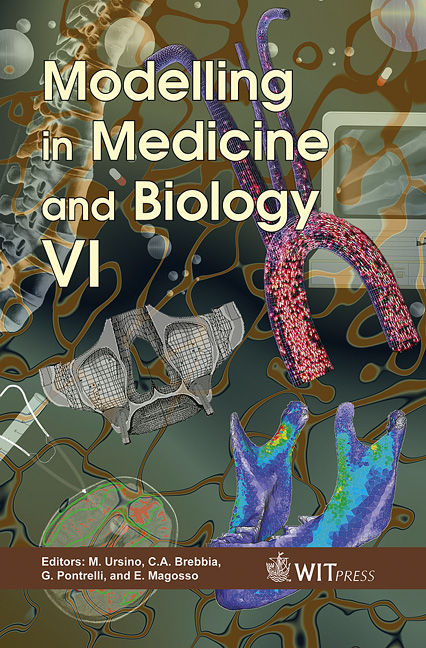Numerical And Experimental Study On Cerebral Contusion Under Impact Loading
Price
Free (open access)
Transaction
Volume
8
Pages
11
Published
2005
Size
850 kb
Paper DOI
10.2495/BIO050271
Copyright
WIT Press
Author(s)
S. Aomura, S. Fujiwara & A. Nishimura
Abstract
The mechanism of brain contusion is investigated using a finite element analysis. Prior to the numerical calculation for a finite element human head model, the experimental study of an impact loading for a water-filled acrylic cylindrical container was carried out in order to observe the fundamental physical phenomenon and to confirm the validity of the finite element analysis in comparison with the both numerical and experimental results. After the stroke, the deflection of the acrylic container wall propagated in both sides of the stroke point, and large negative pressure was generated just in the opposite side of the stroke point when deflections from both sides met. The time taken until the deflection reached the opposite side was close to the natural period of the waterfilled container and the period of fluctuation of internal pressure was equal to the natural frequency of the water-filled container. In numerical analysis the amplitude of the pressure fluctuation was slightly bigger for the tied container wall-water interface condition than for slide condition, and the damping was slightly bigger for the slide condition than for the tied condition, although the numerical and experimental pressure responses resembled each other approximately. Next, the human head model was analysed by FEM and the result was compared with the result of the experimental study reported by Nahum and good agreement was obtained. Five more loading cases were investigated. The deflection of the skull gave a large effect on the fluctuation of the internal pressure also for both coup and conrecoup contusions. Although in the frontal, occipital and under occipital region strokes the intracranial pressure of the coup and the contrecoup side was almost the same, in the parietal and temporal region strokes the intracranial pressure in the coup side was bigger than the contrecoup side. Keywords: cerebral contusion, coup and contrecoup, impact loading, FEM.
Keywords
cerebral contusion, coup and contrecoup, impact loading, FEM.





